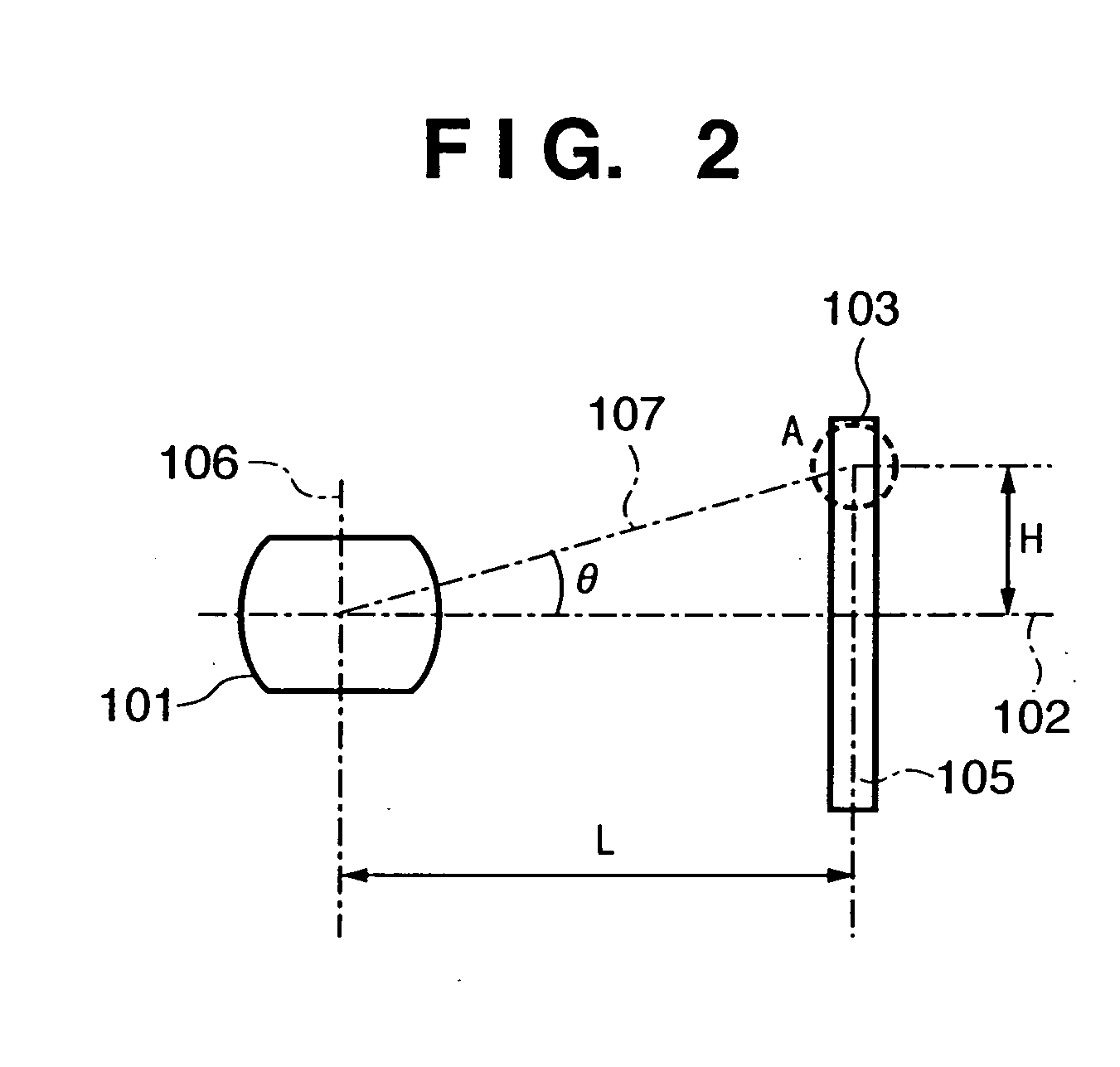Solid-state image sensing element and its design support method, and image sensing device
a technology of image sensing element and design support method, which is applied in the direction of radioation control device, television system, instruments, etc., can solve the problems of light rays not being able to enter the photoelectric conversion unit, phenomenon posing severe bottlenecks, and frame periphery often becoming dark, so as to improve the degree of design freedom and high light collecting efficiency
- Summary
- Abstract
- Description
- Claims
- Application Information
AI Technical Summary
Benefits of technology
Problems solved by technology
Method used
Image
Examples
first embodiment
[0076]FIG. 1 is a sectional view showing the concept of the arrangement of an image sensing device such as a digital still camera system and the like. Referring to FIG. 1, reference numeral 101 denotes a convex lens as an imaging optical system; 102, an optical axis of the imaging optical system 101; 103, an image sensor for converting an object light image formed by the imaging optical system into an electrical signal; and 104, a housing that holds the imaging optical system 101 and image sensor 103, and has a function as a camera obscura. Note that the imaging optical system 101 is illustrated as a single lens (convex lens) for the descriptive convenience. In practice, the imaging optical system can be an imaging optical system having positive power by combining a plurality of lenses, reflecting mirrors, or diffraction imaging optical systems. Also, a zoom function may be applied. Furthermore, the imaging optical system 101 may have a stop for light shielding that cuts ghost and f...
second embodiment
[0139]FIG. 14 is a side sectional view showing a schematic structure of a digital color camera as an image sensing device according to the second embodiment of the present invention. This camera is a single-plate type digital color camera using an image sensing element such as a CCD, CMOS sensor, or the like, and obtains an image signal indicating a moving or still image by driving the image sensing element continuously or in a one-shot manner. Note that the image sensing element is an area sensor which converts incoming light into charges according to the amount of light, accumulates the charges for respective pixels, and reads out the accumulated charges.
[0140] Referring to FIG. 14, reference numeral 110 denotes a camera body; and 126, a lens device which includes an image sensing lens 125 and is detachable from the camera body 110. Note that FIG. 14 depicts only one lens as the image sensing lens 125. However, the image sensing lens 125 is normally formed by combining a pluralit...
third embodiment
[0206] The light guide can be formed by combining other materials.
[0207] In the third embodiment, in the color image sensing element with the structure shown in FIG. 23, the insulating interlayer 38 is formed of silicon oxide (SiO2) and the embedded transparent layer 36 is formed of silicon nitride (Si3N4) unlike in the second embodiment.
[0208] Since the refractive index of the embedded transparent layer 36 is 2.0 and that of silicon oxide (SiO2) that forms the insulating interlayer 38 that neighbors the embedded transparent layer 36 (silicon nitride) is 1.46, a refractive index difference of about 1.37 times is generated. For this reason, light rays that obliquely enter the boundary surface beyond the critical angle from the high refractive index side toward the low refractive index side can be totally reflected. With such light guide structure, obliquely coming light is efficiently guided to the photoelectric conversion unit 31.
[0209] Furthermore, in the third embodiment, the f...
PUM
 Login to View More
Login to View More Abstract
Description
Claims
Application Information
 Login to View More
Login to View More - R&D
- Intellectual Property
- Life Sciences
- Materials
- Tech Scout
- Unparalleled Data Quality
- Higher Quality Content
- 60% Fewer Hallucinations
Browse by: Latest US Patents, China's latest patents, Technical Efficacy Thesaurus, Application Domain, Technology Topic, Popular Technical Reports.
© 2025 PatSnap. All rights reserved.Legal|Privacy policy|Modern Slavery Act Transparency Statement|Sitemap|About US| Contact US: help@patsnap.com



